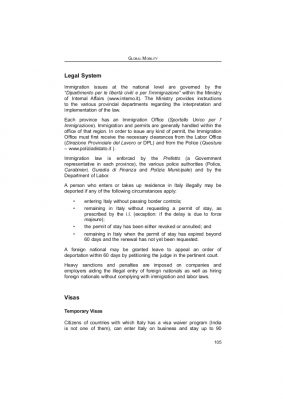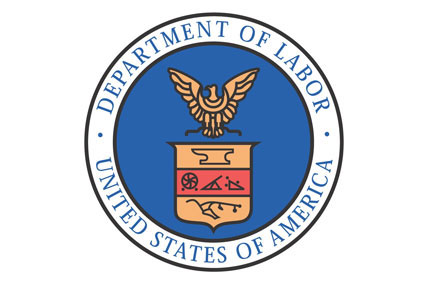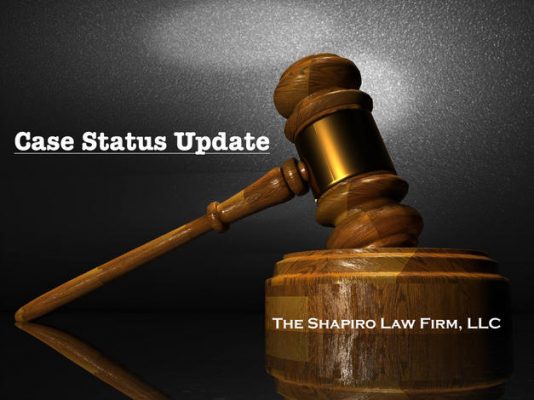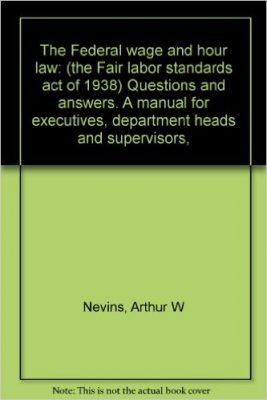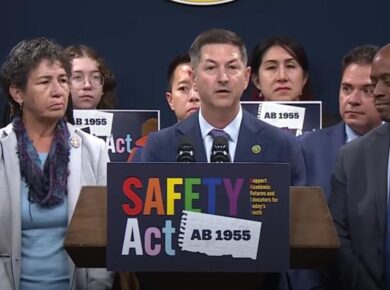Introduction to FMLA
The Family and Medical Leave Act (FMLA) is a crucial piece of legislation in the United States, designed to safeguard the rights of employees needing to take unpaid leave for specific family and medical reasons. Enacted in 1993, the FMLA aims to provide a balance between the demands of the workplace and the health needs of employees and their families. This act ensures that employees can take necessary time off without the risk of losing their job or health insurance coverage.
Under the FMLA, eligible employees are entitled to up to 12 weeks of unpaid leave within a 12-month period. This leave can be taken for various qualifying reasons, including the birth and care of a newborn child, the adoption of a child, caring for an immediate family member with a serious health condition, or dealing with the employee’s own serious health condition that makes them unable to perform their job functions. Additionally, the FMLA provides provisions for military family leave, allowing family members to take leave for qualifying exigencies arising from a family member’s military service.
The FMLA applies to all public agencies, including local, State, and Federal employers, and private sector employers who employ 50 or more employees for at least 20 workweeks in the current or preceding calendar year. To be eligible for FMLA leave, employees must have worked for the employer for at least 12 months and have at least 1,250 hours of service during the 12 months prior to the start of the leave. This act plays a vital role in ensuring that employees do not have to choose between their job and their family or health needs.
The importance of the FMLA cannot be overstated, as it provides a safety net for employees, allowing them to address significant personal and family health issues without the additional stress of job insecurity. By protecting employees’ rights to take necessary leave, the FMLA fosters a healthier, more supportive workplace environment and contributes to the overall well-being of the workforce.
Employee Rights Under FMLA
The Family and Medical Leave Act (FMLA) provides critical protections and rights to employees, ensuring they can take necessary leave for specific family and medical reasons without jeopardizing their job security. To qualify for FMLA leave, an employee must work for a covered employer, have worked at least 1,250 hours over the past 12 months, and be employed at a location where the company has 50 or more employees within 75 miles. These criteria ensure that employees who have shown a significant commitment to their job are eligible for these protections.
Under FMLA, eligible employees are entitled to up to 12 weeks of unpaid leave within a 12-month period for various qualifying reasons. These reasons include the birth and care of a newborn child, adoption or foster care placement of a child, caring for an immediate family member (spouse, child, or parent) with a serious health condition, or the employee’s own serious health condition that makes them unable to perform essential job functions. Additionally, the FMLA includes provisions for military family leave, allowing eligible employees to take leave for qualifying exigencies related to a family member’s military service.
One of the cornerstone protections provided by FMLA is job security. Upon returning from FMLA leave, employees are entitled to be reinstated to their original job or an equivalent position with the same pay, benefits, and other employment terms and conditions. This job protection is crucial, as it prevents employers from penalizing employees for taking necessary leave. Moreover, employees are protected against retaliation for exercising their FMLA rights. Employers are prohibited from interfering with, restraining, or denying the exercise of or the attempt to exercise any right provided under FMLA.
Overall, the FMLA is designed to balance the demands of the workplace with the health and family needs of employees, ensuring they can take essential time off while maintaining their employment status and job security.
Employer Obligations Under FMLA
The Family and Medical Leave Act (FMLA) imposes several critical responsibilities on employers, ensuring that employees can take necessary leave without jeopardizing their job security. One of the primary obligations is to provide clear and timely notice of employee rights under the FMLA. This includes informing employees about their eligibility, the specific expectations for leave requests, and the rights and protections afforded to them. Proper notice is paramount to ensure that employees are aware of the benefits and their rights under the Act.
Another key employer responsibility is to maintain health benefits for employees during their FMLA leave. The Act mandates that employers continue to provide group health insurance coverage under the same terms as if the employee had not taken leave. This provision ensures that employees remain covered and do not face lapses in essential health benefits during their absence from work.
Additionally, employers must ensure job restoration for employees returning from FMLA leave. This means that employees should be reinstated to their original position or an equivalent one with the same pay, benefits, and other terms of employment. This requirement is crucial in preventing potential discrimination or retaliation against employees who exercise their rights under the FMLA.
Compliance with these obligations is not merely a matter of best practices but a legal necessity to avoid significant repercussions. Failure to adhere to FMLA regulations can result in legal actions, including fines and lawsuits, which can be costly and damaging to an organization’s reputation. Therefore, understanding and implementing these responsibilities meticulously is essential for employers to foster a fair and legally compliant workplace.
Reasons for Termination During FMLA Leave
When an employee is on Family and Medical Leave Act (FMLA) leave, employers must tread carefully regarding any potential termination. The principle of the FMLA is to protect employees from losing their jobs due to medical or family reasons. However, this protection does not grant immunity from legitimate and unrelated grounds for termination. It is crucial to understand that any action taken must be based on reasons entirely detached from the employee’s FMLA leave.
One legitimate reason for termination during FMLA leave is company-wide layoffs. If an organization is undergoing restructuring or downsizing, employees on FMLA leave can be included in the layoffs, provided the decision is consistent with how other employees are treated. Documentation and clear communication regarding the criteria used for layoffs are essential to demonstrate that the termination is not related to the FMLA leave.
Another valid ground for termination is documented poor performance. If an employee has a history of documented performance issues predating their FMLA leave, an employer may proceed with termination based on this record. It is critical that these performance issues are well-documented and that the documentation predates the leave to avoid any appearance of retaliation. Employers should ensure that performance reviews and related documentation are consistently maintained to support such decisions.
Violations of company policy also constitute a legitimate reason for terminating an employee on FMLA leave. If an employee breaches company policy, such as engaging in misconduct or failing to adhere to the code of conduct, termination may be warranted. As with performance issues, these violations must be thoroughly documented, and the same standards should apply to all employees, regardless of their FMLA status.
Employers must exercise due diligence and maintain thorough documentation to substantiate any termination decisions during FMLA leave. Ensuring that the reasons for termination are genuinely unrelated to the FMLA leave will help mitigate potential legal challenges and uphold the integrity of the decision-making process.
Legal Implications and Protections
The Family and Medical Leave Act (FMLA) provides crucial protections for employees who need to take leave for specified family and medical reasons. Under this federal law, eligible employees are entitled to take up to 12 weeks of unpaid, job-protected leave per year. However, the legal implications of firing an employee while they are on FMLA leave are significant and complex. Employers must tread carefully to avoid wrongful termination claims that could arise if the termination is linked to the employee’s leave.
Wrongful termination claims under the FMLA can occur when an employee is dismissed for reasons that are directly or indirectly related to their leave. The law explicitly prohibits employers from retaliating against employees for exercising their rights to take FMLA leave. If an employee can demonstrate that their termination was motivated by their use of FMLA leave, they may have a valid claim for wrongful termination. This can involve proving that the employer’s stated reason for the termination was a pretext for discrimination or retaliation related to their leave.
Court cases provide numerous examples where terminations during FMLA leave were deemed unlawful. For instance, in the case of Smith v. Diffee Ford-Lincoln-Mercury, Inc., the court found that the employer violated the FMLA by terminating the employee shortly after she requested leave for a serious health condition. The court concluded that the timing of the termination, coupled with the employer’s negative comments about the employee’s need for leave, suggested a retaliatory motive.
Similarly, in Hodgens v. General Dynamics Corp., the court ruled in favor of the employee, noting that the employer’s decision to terminate was influenced by the employee’s taking of FMLA leave. The court highlighted inconsistencies in the employer’s justification for the termination, which pointed to discriminatory intent.
These cases underscore the importance of adhering to FMLA regulations and ensuring that any decision to terminate an employee on leave is based on legitimate, non-discriminatory reasons. Employers must maintain thorough documentation and provide clear, consistent justifications for their actions to mitigate the risk of wrongful termination claims.
Steps for Employers to Mitigate Risks
Employers must navigate the complexities of the Family and Medical Leave Act (FMLA) with diligence to mitigate risks associated with terminating an employee on leave. A structured approach encompassing thorough documentation, fair performance reviews, and consistent application of company policies is essential.
First and foremost, maintaining comprehensive documentation is crucial. Employers should keep detailed records of all communications with the employee regarding their FMLA leave. This includes the initial request for leave, any follow-up discussions, and documentation of the employee’s performance both before and during the leave period. Proper documentation serves as vital evidence to support any employment decisions and can protect the employer in case of disputes.
Conducting fair and unbiased performance reviews is another critical step. Employers should ensure that performance evaluations are based on objective criteria and are conducted consistently for all employees, including those on FMLA leave. It is vital to separate the employee’s performance issues from their leave status. If performance problems existed prior to the FMLA leave, they should be well-documented and communicated to the employee as part of the regular performance management process.
Consistency in applying company policies cannot be overstated. Employers should apply the same standards and procedures to all employees, irrespective of their leave status. This includes adhering to the company’s disciplinary policies and ensuring that any action taken is in line with established protocols. By treating all employees equally, employers can avoid claims of discrimination or retaliation related to FMLA leave.
Lastly, seeking legal counsel before making termination decisions related to FMLA leave is advisable. Legal experts can provide guidance on compliance with FMLA regulations and help ensure that the employer’s actions are defensible.
By meticulously documenting interactions, conducting equitable performance reviews, and consistently applying company policies, employers can mitigate risks and uphold their obligations under the FMLA, thereby safeguarding both their organization and their employees.
Employee Recourse and Rights
Employees who believe they have been wrongfully terminated while on FMLA leave have several avenues of recourse to consider. First and foremost, it is crucial for the employee to gather all relevant documentation, such as medical records, communication with the employer, and any written notice of termination. This evidence will be vital when presenting their case.
One of the primary steps an employee can take is to file a complaint with the U.S. Department of Labor’s Wage and Hour Division (WHD). The WHD is responsible for enforcing the Family and Medical Leave Act (FMLA) and can initiate an investigation into the alleged wrongful termination. To file a complaint, the employee can contact the WHD through their website, by phone, or by visiting a local office. The complaint should be filed within two years of the alleged violation, or three years if the violation was willful.
Seeking legal counsel is another critical step for employees who feel they have been wrongfully terminated. An attorney specializing in employment law can provide guidance on the strength of the case, potential legal strategies, and the likelihood of success. Legal counsel can also assist in navigating the complexities of the legal system and ensure that the employee’s rights are adequately represented.
Potential remedies for wrongful termination under the FMLA include reinstatement to the former position or an equivalent one, back pay for lost wages, and compensation for lost benefits. In some cases, employees may also be entitled to liquidated damages, which can amount to double the lost wages and benefits if the employer’s violation is deemed willful. Additionally, the court may award attorneys’ fees and other costs incurred in pursuing the claim.
Understanding these recourse options is essential for employees to protect their rights and seek justice if they have been wrongfully terminated while on FMLA leave. By taking prompt action and utilizing the available resources, employees can work towards a resolution that upholds the protections afforded by the FMLA.
Conclusion and Best Practices
Understanding the Family and Medical Leave Act (FMLA) is crucial for both employers and employees. The intricacies of FMLA regulations can significantly impact workplace dynamics and legal compliance. Key points discussed include the fundamental provisions of FMLA, the conditions under which an employer can consider termination during leave, and the necessary documentation and procedures to follow.
For employers, it is imperative to recognize the obligation to provide job-protected leave to eligible employees and to avoid retaliatory actions that could lead to legal consequences. Employers must ensure that any decision to terminate an employee on FMLA leave is based on legitimate business reasons unrelated to the leave itself. Proper documentation and adherence to company policies are essential in demonstrating compliance with FMLA requirements.
Employees, on the other hand, should be well-informed about their rights under FMLA, including the conditions for eligibility and the process for requesting leave. Maintaining open communication with the employer and providing required documentation promptly can help safeguard their job security during the leave period.
Best practices for both parties include fostering a transparent and supportive workplace culture. Employers should offer training programs to educate managers and HR personnel about FMLA regulations and best practices. Developing clear, written policies regarding FMLA leave and consistently applying them can mitigate misunderstandings and potential disputes.
Employees should keep thorough records of their FMLA leave requests and any communications with their employer. Understanding one’s rights and responsibilities under FMLA can empower employees to make informed decisions and seek recourse if necessary.
In summary, adherence to FMLA guidelines and proactive measures by both employers and employees can ensure a fair and compliant work environment. By prioritizing education, clear communication, and proper documentation, organizations can navigate the complexities of FMLA with confidence and integrity.

